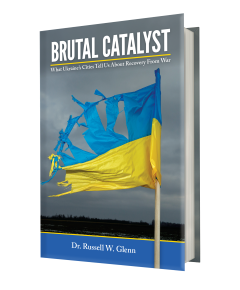Home > Open Access Journals > JSS > Vol. 9 > Volume 9, No. 1, Special Issue Spring 2016: Designing Danger: Complex Engineering by Violent Non-State Actors
Author Biography
Michelle Jacome is a Senior Researcher in the Unconventional Weapons and Technology Division at the National Consortium for the Study of Terrorism and Responses to Terrorism (START). Prior to her position at START, she worked for the United Nations Development Program in Ecuador. Her research includes transnational criminal organizations, illicit trafficking, terrorism, the crime-terror nexus, counterterrorism, and the adoption of new emerging terrorist technologies, particularly with regard to the use of unconventional weapons. She has carried out field research on these topics across Latin America. She completed her Master of Science in Development Management at the American University in Washington, D.C.
DOI
http://dx.doi.org/10.5038/1944-0472.9.1.1509
Abstract
The Revolutionary Armed Forces of Colombia (FARC) have been one of the world's most consistently formidable violent non-state actors over the last forty years. Unsurprisingly, the group has provided one of the most compelling and concerning examples of the level of technical sophistication attainable by sub-state organizations. Over the last two decades the group has carried out an iterative and innovative process that, in reaction to improved detection capabilities, has brought them from depending on disposable go-fast boats to transport drugs to possessing fully submersible and reusable covert vessels for transportation. The following case study will discuss the development of narco-submarines and the underlying motivations behind the pursuit of this complex engineering task. The case study will outline the different phases of the narco-submarine development and highlight FARC’s determination to overcome the challenges present in each design. This discussion will show how FARC’s systematized acquiring of information and expertise has resulted in the accomplishment of fully submersible vessels, capable of transporting more than 10 tons of illicit product.
Disclaimer
Editor’s Note: This article forms part of a series of related case studies collected in this Special Issue and should be viewed in the context of the broader phenomenon of complex engineering by violent non-state actors. Readers are advised to consult the introductory and concluding papers for a full explanation and comparative analysis of the cases.
Acknowledgements
This work was supported by Sandia National Laboratories, Contract #1525332. Any opinions, findings, conclusions and recommendations in this issue are those of the authors and do not necessarily reflect views of Sandia National Laboratories or the U.S. Department of Energy.
Recommended Citation
Jacome Jaramillo, Michelle. "The Revolutionary Armed Forces of Colombia (FARC) and the Development of Narco-Submarines." Journal of Strategic Security 9, no. 1 (2016)
: 49-69.
DOI: http://dx.doi.org/10.5038/1944-0472.9.1.1509
Available at:
https://digitalcommons.usf.edu/jss/vol9/iss1/6


